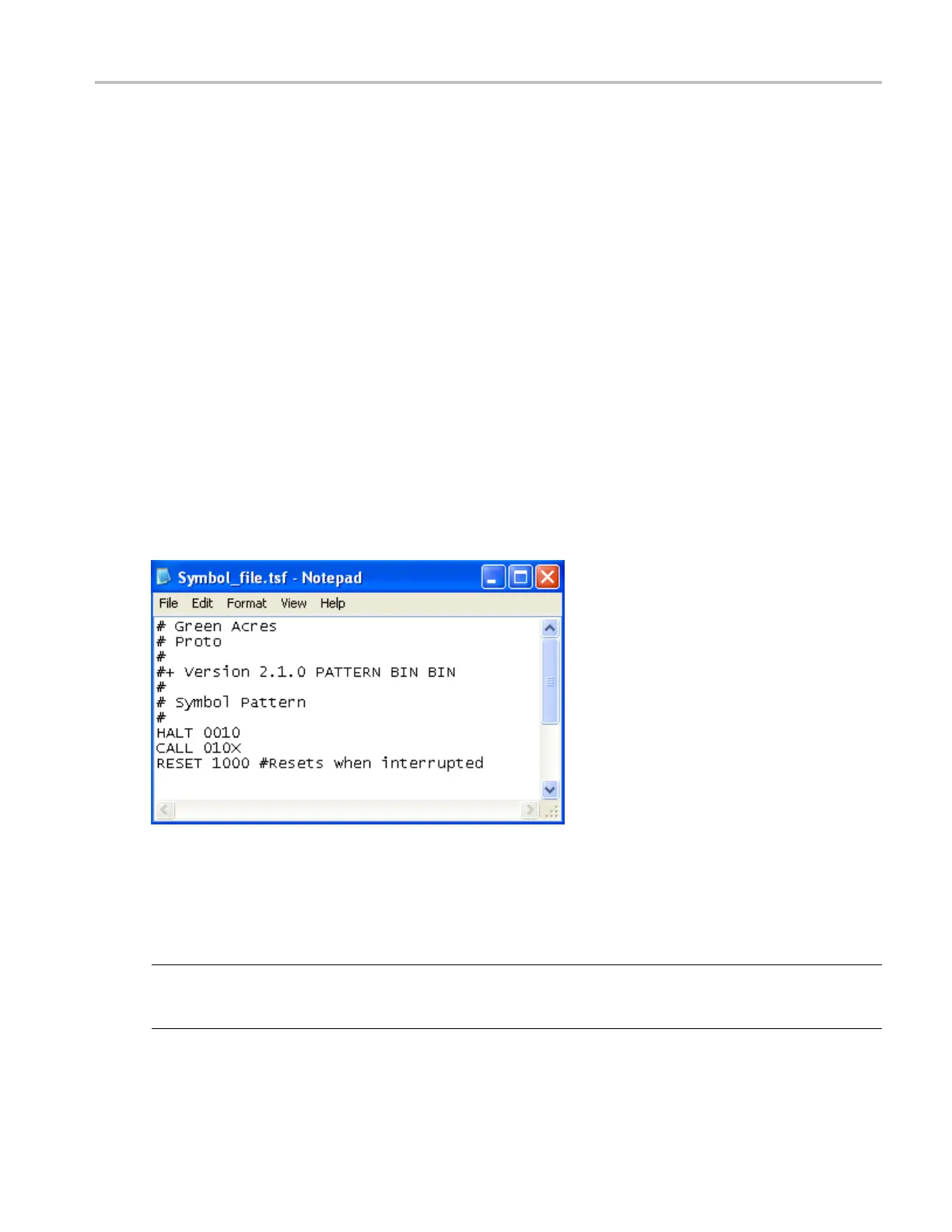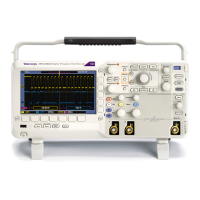Bus setups Symbol file format
All lines in the file that begin with a number sign (#) character are treated as comments, unless the very
next character is a plus sign (+). The plus sign signifies a reader directive. The number sign character can
also initiate
a comment on the e nd of a symbol definition. All text between the number sign and the end
of the line is treated as a comment and ignored.
A TSF header i
dentifies the file format version to the reader in the instrument. The header also specifies
that the file contains pattern symbols and the n umber system radices used to specify symbol values.
The next gra
phic shows an example of a TSF header in a symbol file. The first few lines are comments
that describe the file and are not required as part of the fi le header.
After the c
omment lines (if any), the file must contain the TSF header line that starts with the #+ characters
and the Version number. The Version number contains three fields. The first two fields are the file format
major and minor version numbers. The instrument only reads TSF files where the major and minor version
number of the file is less than or equal to that o f the instrument reader. The third field denotes minor
format changes, which do not impact the file reader.
In the header, the Version number is followed by the word PATTERN.
Next in the header are two radix fields: Display and File. The Display Radix field sets the default radix
that will be used to display the numeric symbol value. This field must be HEX, OCT, DEC, or BIN.
The File Radix field specifies the radix used by the symbol values in the file. The File Radix field must
be HEX, OCT, DEC, or BIN.
You can create symbol names from ASCII with up to 220 characters. The numeric values must reflect
the base specified by the File Radix field. An X represents a “don't care” value. The number of bits
r
epresented by each character depends on the radix. For a HEX value, each character represents 4 bits. For
an OCT value, each character represents 3 bits. For a BIN value, each character represents 1 bit.
NOTE. The order of the symbols in the file is important. The instrument scans the list of pattern symbols
starting from the top of the file and displays the first symbol that matches the bits with numeric values
(not Xs).
DSA/DPO70000D, MSO/DPO/DSA70000C, DPO7000C, and MSO/DPO5000 Series 155

